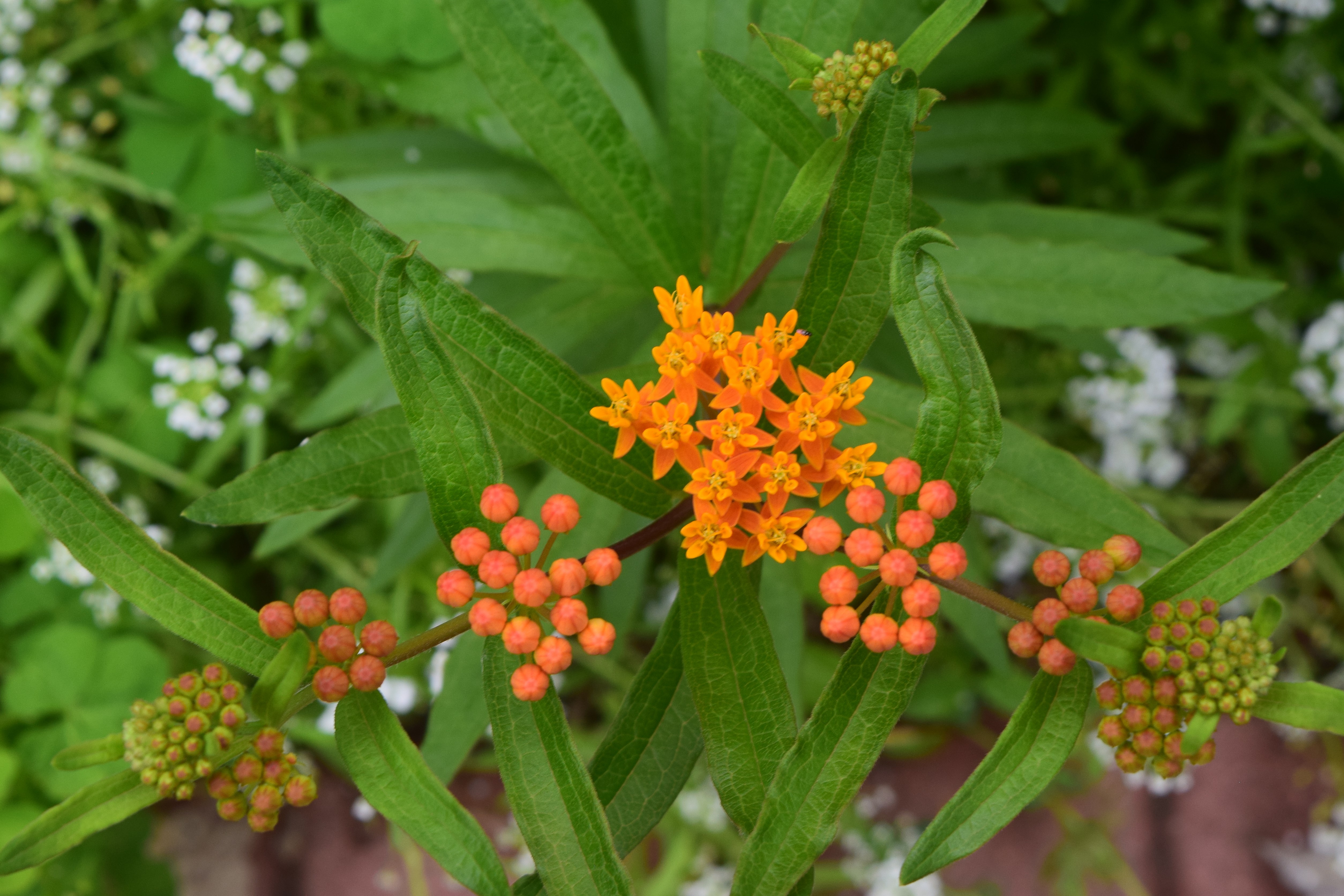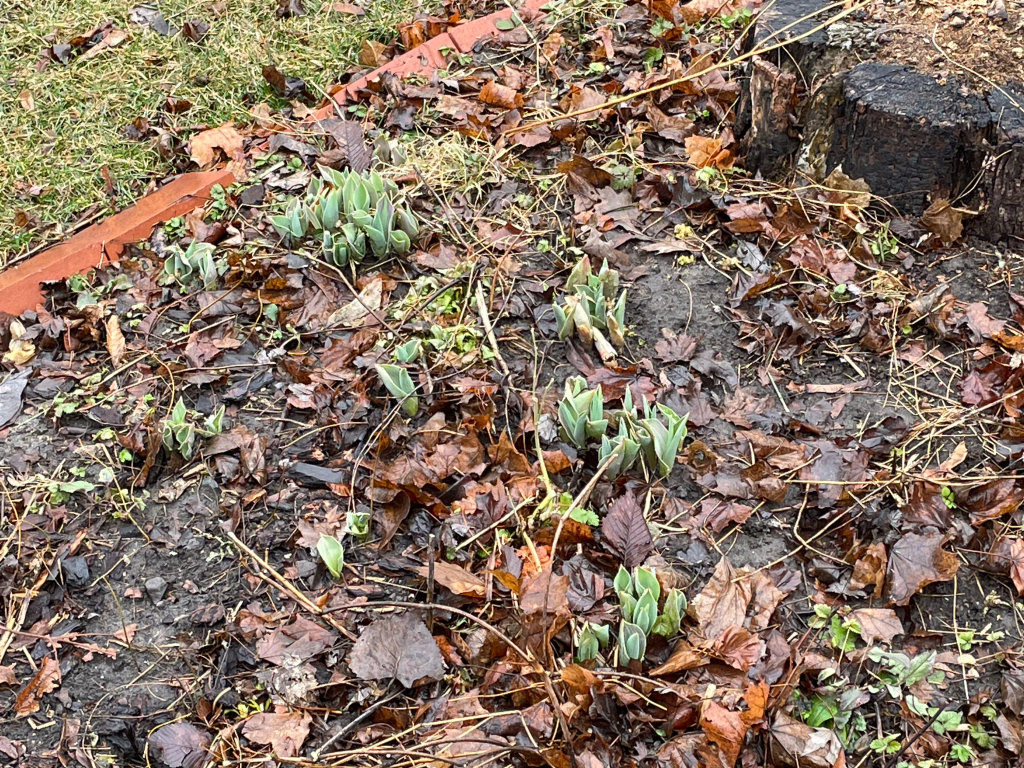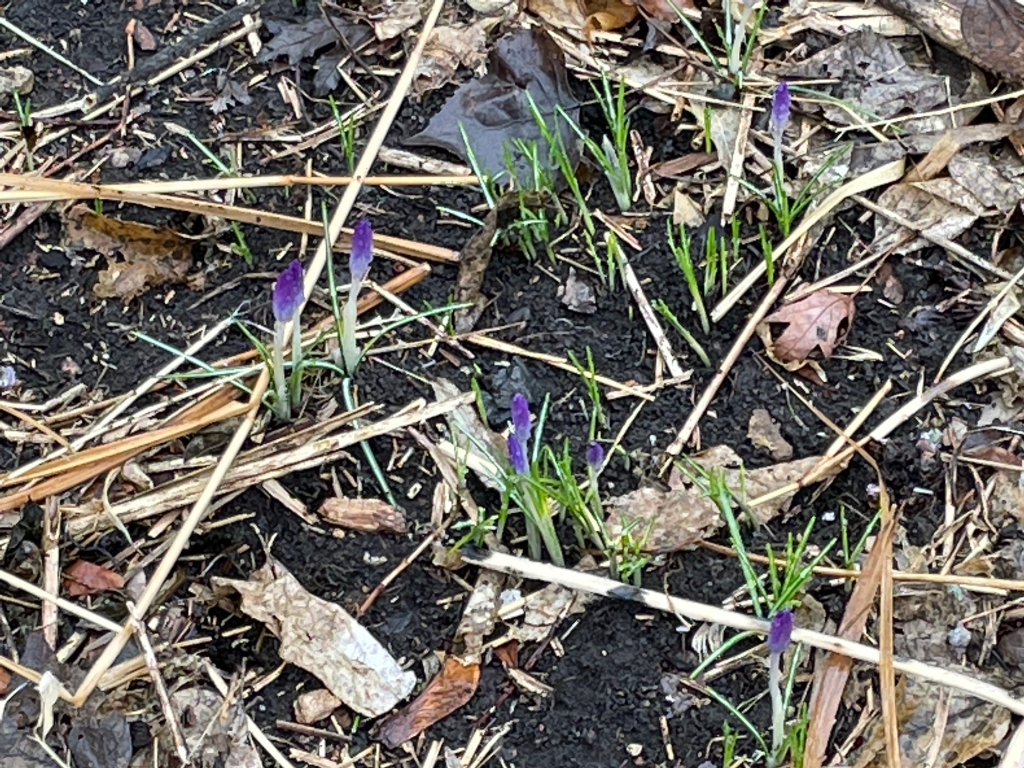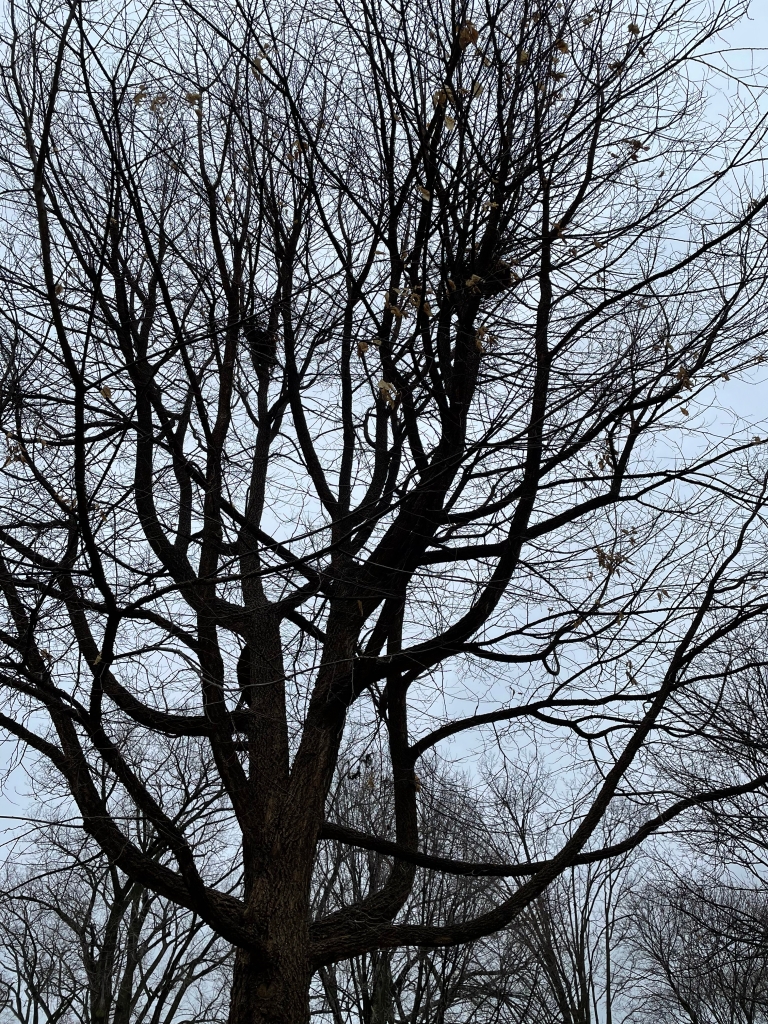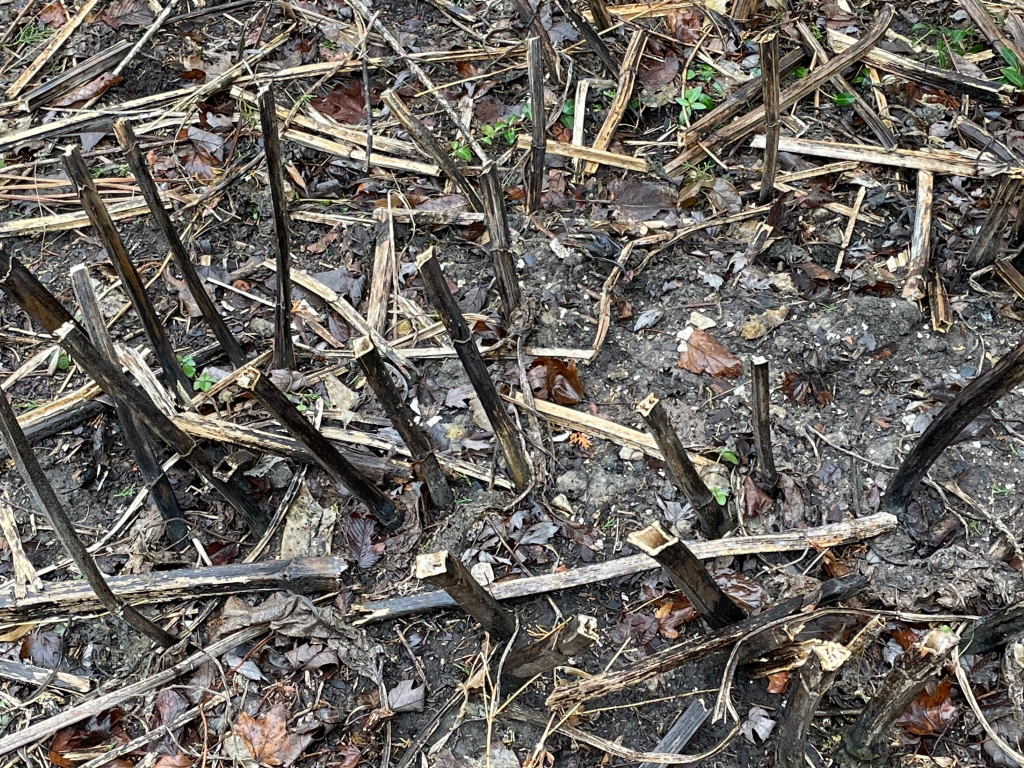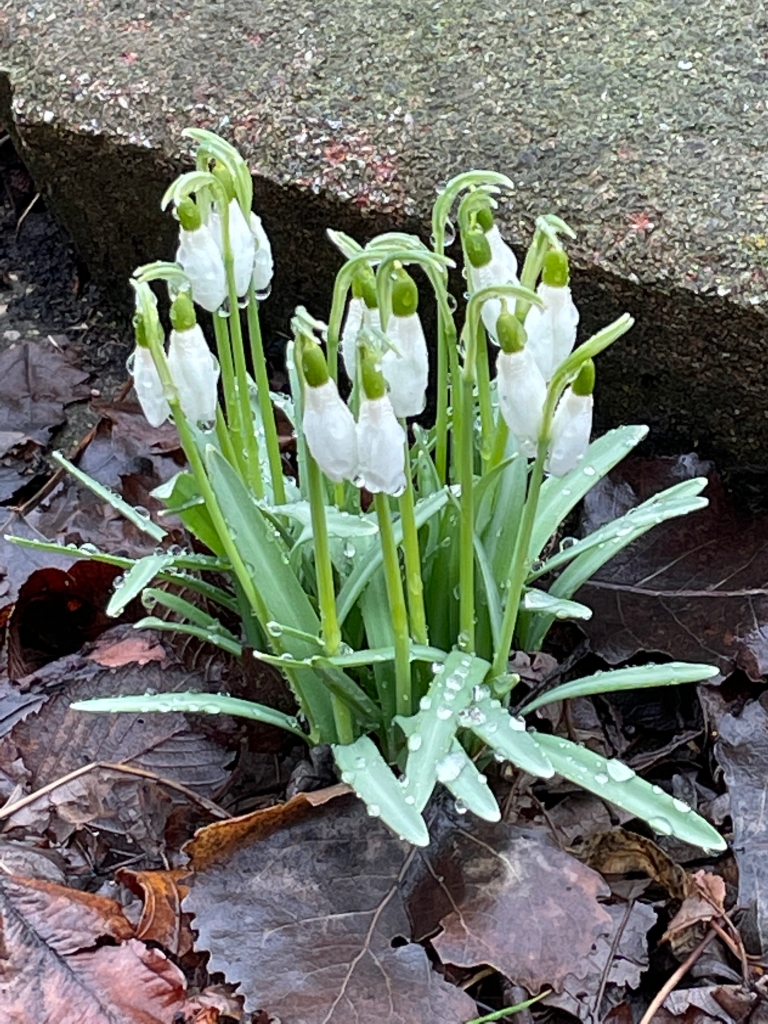I have a special place in my heart for spring ephemerals. They are early harbingers of spring. Perhaps what I love is the surprise: You weren’t expecting us, but here we are! Volunteers are always welcome (though maybe not Dandelions and Creeping Charlie…). Perhaps I identify with their shy nature, since many of them have to be sought out in the back of flower beds, beneath otherwise innocuous-looking green leaves. And they certainly don’t overstay their welcome!
Some of them do just show up, with no fanfare, perhaps a remnant of the time long ago when our block was open prairie. Others are purchased over and over, restarted with hopes that this will be the lucky time when the plants choose to stay. And a few of them are invited in (I’m thinking of you, Celandine poppy), feel right at home, and, after a short honeymoon, try to take over.

I had seen ephemerals occasionally before we had them in the garden, when I managed to hike in the Midwestern woods at just the right time. But my first real consciousness of them came during the two years we lived in Madison, Wisconsin. We bought a house with a very neglected garden which abutted a woodlot. A number of ephemerals had crept in to take advantage of the neglected flowerbeds: Uvularia, Large-Flowered Trillium (possibly planted by the previous owners), Jack-in-the-Pulpit, and Dutchman’s Breeches, along with so much Jewelweed that we pulled it out by the bucketful. I fell in love.

I wasn’t sad to leave Madison and return to Chicago, but I knew I would miss the garden. Jason searched for, and found (harder then than now) Uvularia to plant in our new flowerbeds. He tried Large-Flowered Trillium more than once before it took — and it’s still a bit marginal. Though it has bloomed for several years in a row, I don’t take it for granted.

There was a small, inconspicuous stand of Prairie Trillium next to a fence, near some bushes, when we moved in. It’s still there, same size, blooming for about a week or ten days each year. This photo is from 2019, because I didn’t get a good picture this year.

And we were delighted to find Jack-in-the-Pulpit volunteering in two flowerbeds — though not every year, and so well hidden that you have to be looking for it specifically to notice its presence.

As I thought about spring ephemerals for this post, I realized I didn’t know for sure exactly which flowers were included. So I did a bit of research. (I am learning so much as I write this blog!) Here is a list of Illinois ephemerals. Perhaps you can find a good list for your location. Here, for example, is a completely different list from the Mountain West. If you find a great list for your area, post a link in the comments so we can all enjoy it!
The definition doesn’t seem to be cut-and-dry: the Illinois Extension Service refers to tulips and narcissus as “non-native perennials,” a category which surely includes snowdrops as well. As always, anyone with more knowledge of the matter is encouraged to share in the comments.
Ephemerals show up in the early spring before the leaves are fully out on the trees. They bloom and then disappear — although for some of them, their leaves remain. They provide early sustenance for pollinators coming out of hibernation. Some of their seeds have sweet or fat elements to encourage ants to spread them.

Columbine does not appear on the Illinois Extension Service list, but it clearly seems to belong. I think it is time to plant more in the garden. This Columbine in the Front Island Bed is one of about five or six plants remaining of a larger group, each now isolated and looking a bit lonely.

I believe the May apples along the back fence introduced themselves into the garden a few years ago. They really tickle my fancy. But you have to keep an eye on them, or else they bloom so inconspicuously that it is over and you’ve missed it.

Virginia Bluebells and Celandine Poppies grow with such abandon in our garden that I find it hard to think of them as spring ephemerals, but the Illinois Extension Service says they are. Although here it is July, and I’m still gnashing my teeth at all the half-dead Celandine poppy plants taking up space in the garden. Ephemeral, indeed! I’m going to call the Extension Service and report them!

The poppies look perfectly innocent here, until you realize that they have elbowed out a bunch of Virginia bluebells and are pushing the Bleeding Hearts to the side as well. I also have photos of the driveway bed with poppies forming a lovely background to the tulips and daffodils — but meanwhile, they are quietly smothering some of the flowers that should come along next. I’ll know next year to take a firmer hand with them.
Still, this color combination is lovely, and makes me think of Easter bonnets. Those are false forget-me-nots in the background — and behind the photographer are ostrich ferns.
Okay, I thought ephemerals would make for a short post, but it’s too late for that! I’m going to end with a couple of pictures from our visit to Mount Cuba Center, a botanic garden in Delaware with natives from the MidAtlantic region. We had the amazing good fortune to arrive at peak ephemeral season, and it took Jason three posts to cover it all — trilliums and trout lilies, various ephemerals, and a broader view. I highly recommend a visit!




Did you have ephemerals in your garden this spring?























































